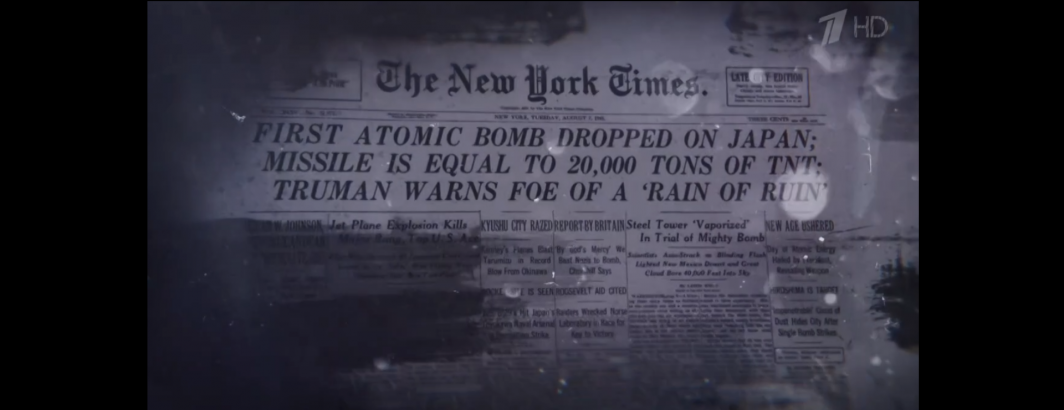
Channel One Russia ran a documentary recently narrating Russia's perspective on its Soviet nuclear weapons program. The program opens with:
Today, the Bulletin of Nuclear Scientists announces that nuclear midnight is 100 seconds away. This watch was invented in 1947 by American scientists who created the world's first nuclear bomb. Those Who after Hiroshima and Nagasaki were horrified. Realizing. What lethal force has been put into the hands of the US government, the scientific director of the American atomic the project said we had done work behind the devil long before that famous statement right after the bomb was made. He said we made a bomb. Let's make sure we don't blow up the world by learning about the theme of our film…
And closes with:
Together with the Red Army, together with the entire Soviet people, Soviet foreign intelligence came running to defeat the Nazis, together with scientists, engineers, designers of nuclear mushroom father. The nuclear scientists were in the same silent stupor when they were wiped off the face of the earth Hiroshima and Nagasaki Yes, the world will never be the same, and perhaps he himself will not be soon. Everything changed in 1949, When the Soviet atomic bomb appeared. It became not a threat to the world, but its guarantor gave hope that nuclear parity would be maintained for many years, that the Doomsday clock would never strike midnight.
Look carefully and you'll notice the framing that the Soviet nuclear weapons program represented a force for peace by acting as a counterbalance to the US nuclear arsenal. Read through the transcript of the documentary and you'll see fascinating framings and narratives that tie those events of WWII in to many of the core narrative lenses through which Russia is telling its domestic population about its invasion of Ukraine.
The documentary begins at the end of the first show and continues through the second:
This analysis is part of an ongoing collaboration between the Internet Archive and its TV News Archive, the multi-party Media-Data Research Consortium and GDELT.